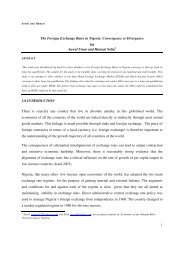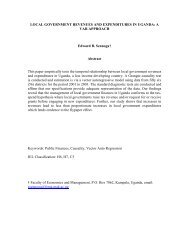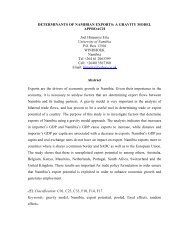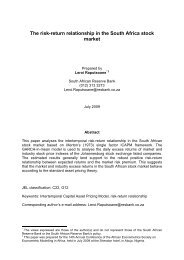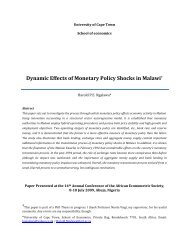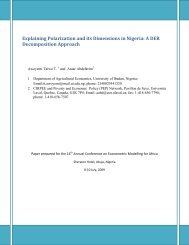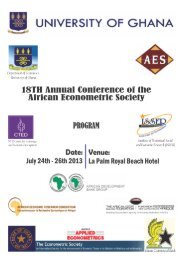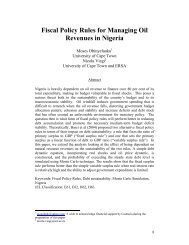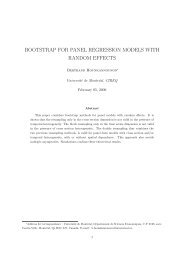An augmented capital asset pricing model
An augmented capital asset pricing model
An augmented capital asset pricing model
You also want an ePaper? Increase the reach of your titles
YUMPU automatically turns print PDFs into web optimized ePapers that Google loves.
large African markets are used in addition to the London market. The African markets are the large<br />
and well regulated Johannesburg Stock Exchange, the smaller regional hub North African markets of<br />
Egypt and Morocco and the much smaller and less active eastern hub market in Nairobi. The Kenyan<br />
market is split into two components, the main listings and the Alternative Investment Market, which is<br />
designed to encourage listings from the SME sector. Illiquidity series were constructed on a time<br />
series cross section basis and incorporated into the Fama French (1993) risk adjusted CAPM.<br />
Results show this <strong>model</strong> is superior to both the Sharpe/Linter and the Fama and French<br />
<strong>model</strong>s as illiquidity is both a priced and consistent characteristic in these emerging markets. In all<br />
countries, the market risk premium, the premiums attributed to the size factor and the illiquidity factor,<br />
are important parameters in <strong>pricing</strong> <strong>asset</strong> returns. However, the most striking differences between all<br />
the sample group countries are in the dramatic variation in costs of equity. Not surprisingly, London<br />
has the lowest cost of equity, followed by South Africa, although this differential has already<br />
encouraged prominent South African firms such as Old Mutual and <strong>An</strong>glo American to list in London.<br />
The markets of Egypt and Morocco have higher costs of equity that both London and Johannesburg<br />
but the highest is that of Kenya. In particular, the AIMS market has a cost of equity over three times<br />
that of the main Kenyan listings board. This suggests that companies in Kenya are only able to access<br />
equity finance at a distinct disadvantage to other locations and also that the development policy of<br />
established stock exchanges attempting to attract the SME sector is serious flawed. In terms of the<br />
international investor there is considerable evidence of segmentation amongst the African emerging<br />
markets highlighted by the very different risk premiums and costs of equity in each case. However<br />
considerable benefits can be made through explicitly incorporating size and liquidity premiums into<br />
<strong>model</strong>s that would go some way in capturing the nuances of these markets thereby facilitating equity<br />
portfolio investment and FDI through stakes in listed equities.



